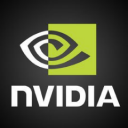The specific command line operation format of NVFlash is as follows:
1. Upgrade BIOS: nvflash --filename.
2. Save the BIOS file: nvflash --save filename.
3. Compare the graphics card BIOS version: nvflash --compare filename.
4. Upgrade TV data: nvflash --tv filename.
5. Display BIOS version: nvflash --version filename.
6. Display the number of BIOS bytes: nvflash --display.
7. Enable write-protected EEPROM: nvflash --protecton.
8. Turn off the write protection function: nvflash --protectoff.
9. Set the IEEE 1394 logo: nvflash --guid.
10. Graphics card adapter list: nvflash --list.
Note: The Windows version of NVFlash does not directly run the graphical interface. It needs to be operated at the command prompt. The operation method is exactly the same as the command under DOS.







































it works
it works
it works